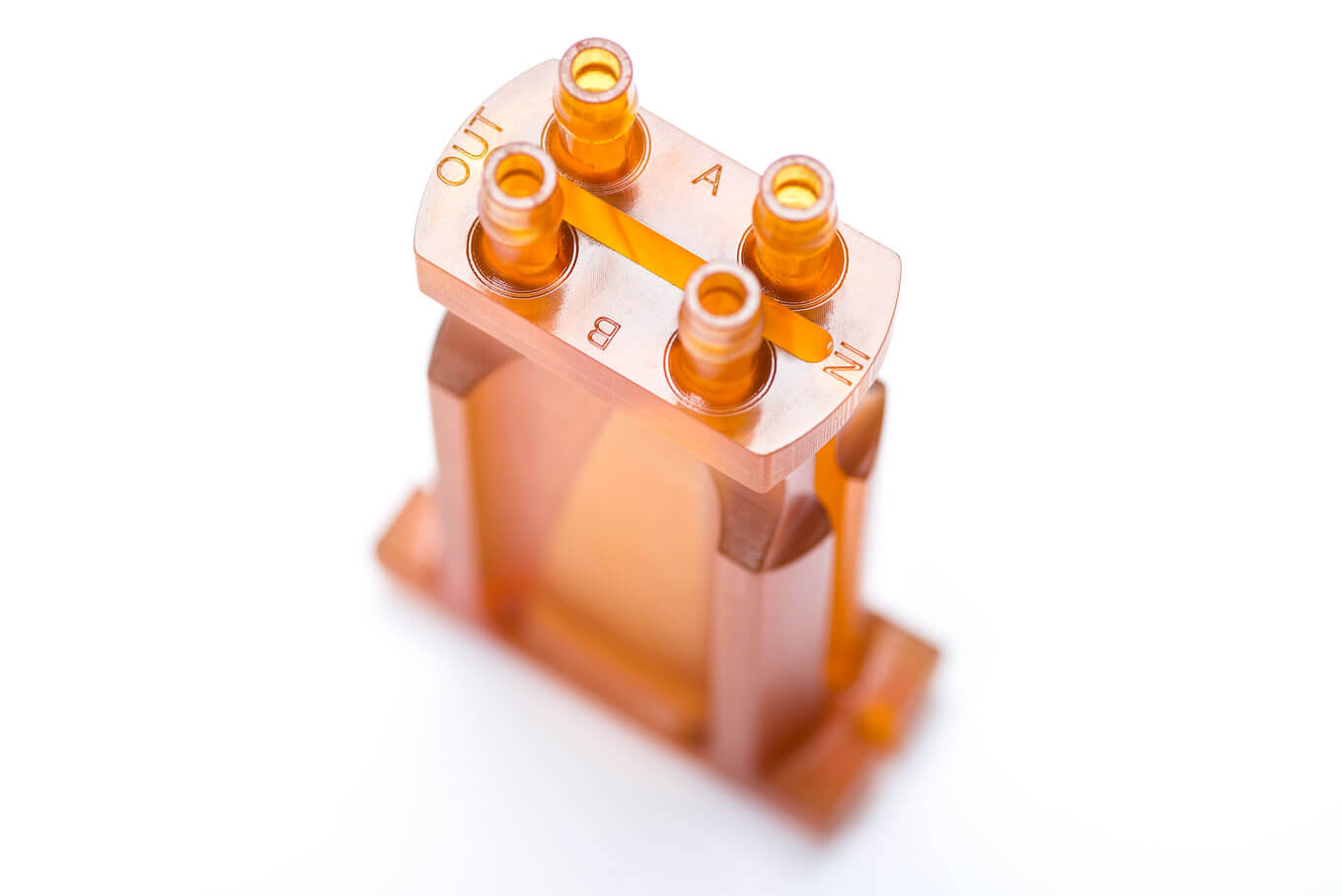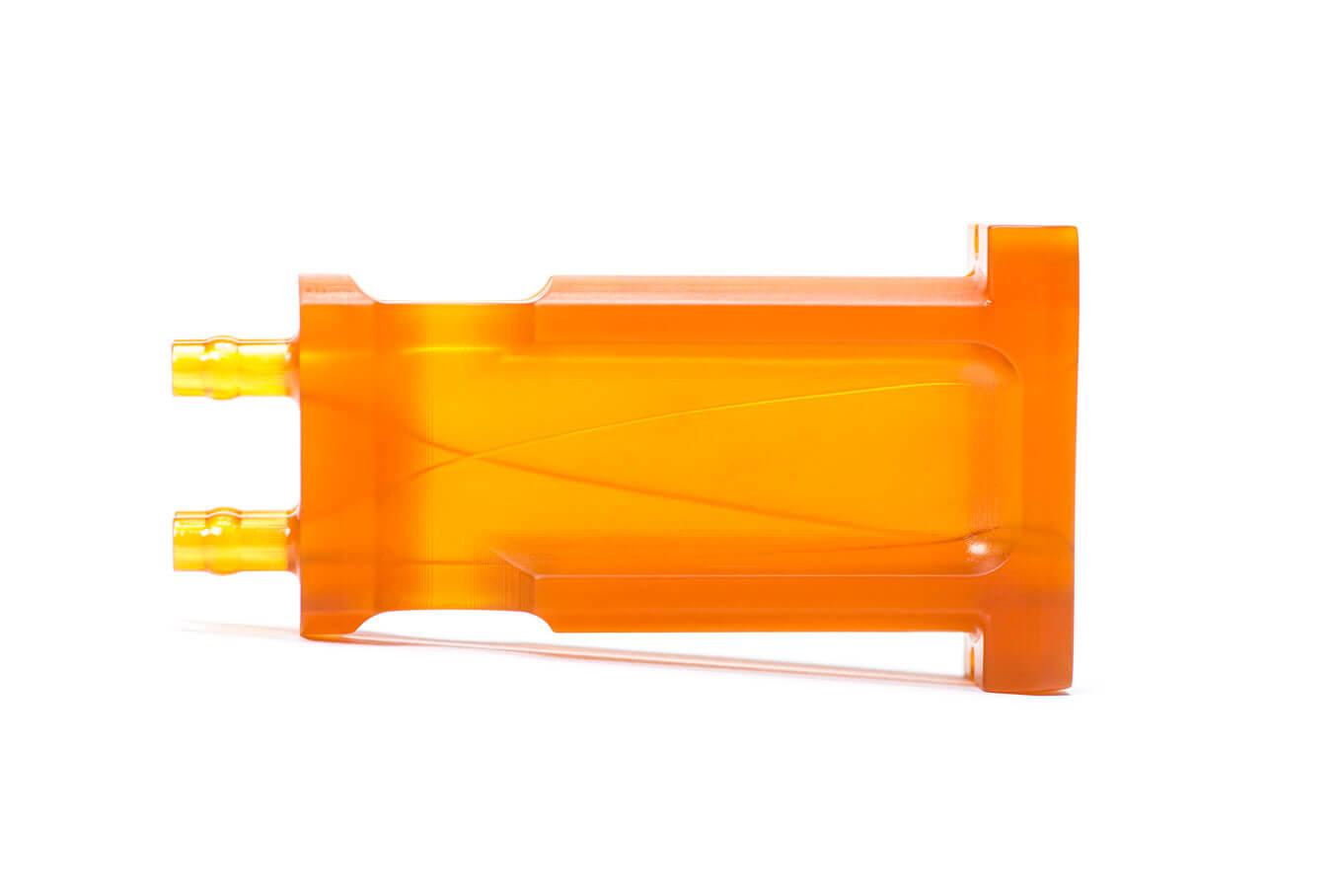
Engineers at the manifold company began with the part’s material: the manifolds need specific chemical resistance, lifetime material stability, and isotropic properties. Without these attributes, design and scalability of an additive process would not matter. Carbon’s Cyanate Ester was the first additive material and process to surpass these requirements with a heat deflection temperature of 230°C, long-term thermal stability, and the necessary chemical resistance.

Passing this initial material hurdle, engineers were free to optimize their design by combining parts and reducing the number of part interfaces. Their new manifold decreases points of possible fluid contamination and improves fluid flow, reliability, and performance of the manifold.
“With design freedom and a new way of designing, the CLIP process allows the development of other products, by controlling build flow, we can control other components in the system, ultimately developing better, more efficient products.”
While additive used to be synonymous with unscalable for the manifold company, they see “CLIP [as] good on the scalability to volume”. The final piece showcases complex geometries visually, and initial testing has proved out all of the hopes above. Currently the group is investigating a final manifold design for eventual direct production of hundreds of thousands of parts.

